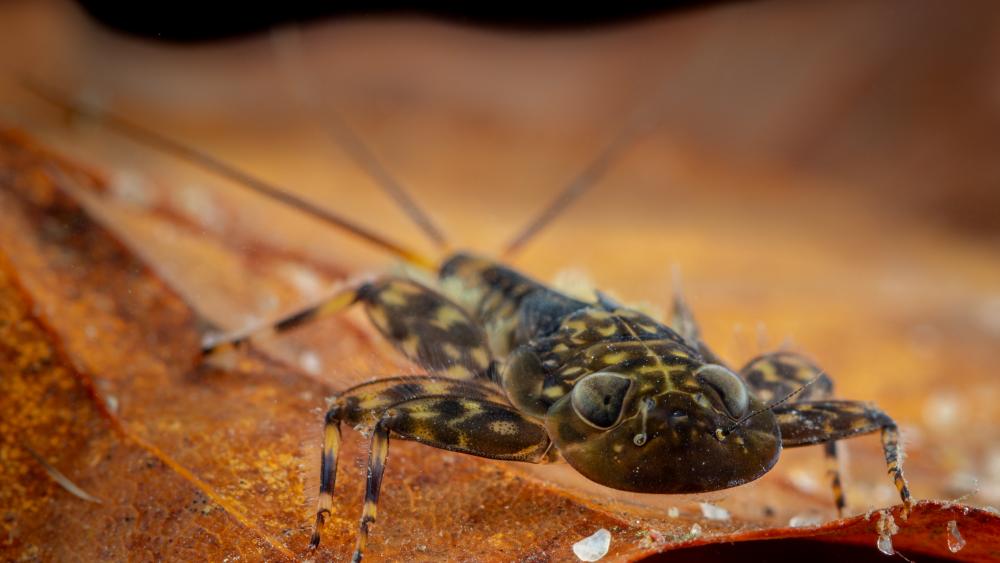
The study also included data on mayfly larvae. © Dr. Julian Taffner (TERRAALIENS)
"Our data show that rivers can indeed recover if we as a society take the right measures," said Professor Sonja Jähnig, Head of Department at the Leibniz Institute of Freshwater Ecology and Inland Fisheries (IGB) and co-author of the study. "However, we have hardly made any progress in the state of biodiversity since 2010, so additional efforts are needed today."
After all-time low, first rapid and significant recovery till 2010
In the second half of the last century, better wastewater treatment in more efficient sewage treatment plants led to an improved water quality in European waters. Biodiversity has also benefited from this: As the new study shows, both species diversity and the abundance of individual species improved significantly between 1968 and 2010 – but without ever reaching the species richness of the past.
The researchers analysed extensive time series of freshwater invertebrate communities collected between 1968 and 2020. "Invertebrates such as mayflies or caddisflies have long been a pillar for monitoring water quality, so we were able to draw on a very good database," explained the study’s first author Professor Dr Peter Haase from the Senckenberg Research Institute and Natural History Museum in Frankfurt, and continued: "These data also show that a stagnation set in after 2010, which indicates that the measures taken so far have been exhausted."
A question of location: urban areas, farmland and dams as risk factors
Freshwater communities downstream of dams and in catchments with a high proportion of urban areas or farmland showed less improvement. To find out what factors are hindering biodiversity recovery in these areas, the researchers combined a high-resolution river network with environmental data reflecting the respective conditions at the time of sampling.
"The fact that biodiversity recovers less in some rivers is due to the fact that downstream of urban areas, micropollutants and nutrients enter the watercourses, and cities are also often gateways for alien invasive species," explained IGB researcher and co-author Dr Sami Domisch, explaining further: "On the other hand, fine sediments, pesticides and fertilisers are more likely to be washed into the watercourses from farmland. And dams fragment water bodies and change the flow and temperature regimes."
Areas that are already particularly affected by global warming also showed lower increases in their biodiversity. This trend is likely to accelerate as temperatures continue to rise and climatic extremes such as drought and heat waves increase in summer.
Invasive alien species as an additional threat
The spread of invasive species was particularly striking: "Based on a partial data set – 1299 out of 1816 – we were able to show that about 70 per cent of the river sections had non-native species with an average proportion of 4.9 per cent of the species and 8.9 per cent of the individuals," reported author Dr Ellen A.R. Welti, a research ecologist at the Smithsonian's Conservation Ecology Center in the USA.
Non-native species may be better able to thrive in urban areas and other heavily impacted areas, the researchers suspect. This could lead to greater losses of rare and endangered native species in the future.
What has been achieved is not enough: additional measures are needed
The measures and resources put in place so far are not enough to speed up the recovery of biodiversity and prevent its decline. Given the expected consequences of climate change, such as higher temperatures and low water flows in rivers, wastewater networks and sewage treatment plants should be further expanded, the overflow of sewage systems during heavy rainfall events should be prevented, and inputs of micropollutants, nutrients, fertilisers and pesticides, salts and other pollutants should be further reduced. In addition, more emphasis should be placed on restoring water bodies in the future.
The researchers criticise the fact that environmental legislation in recent years has not responded adequately to emerging pressures. They urge for a stronger emphasis on areas most at risk of biodiversity loss, i.e. downstream of urban areas, farmland and dams. Additionally, they highlight the importance of preserving and enhancing the protection of systems that have been less impacted so far, as they serve as valuable refuges for biodiversity.
The draft EU Nature Restoration Law, which is currently under negotiation with the Council to finalize the legislation, represents a significant initial stride in the right direction: "It is no longer enough to improve water quality; we need to restore ecosystems on a large scale and fundamentally improve the connectivity of European watercourses," concluded Sonja Jähnig. This would not only boost aquatic biodiversity, but would also support natural flood protection, water retention in the landscape and the self-purification capacity of water bodies.







